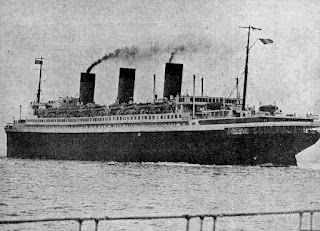Plymothians would line the docks in the hope of seeing famous passengers disembark from the many ocean liners that called at Millbay. The Queen Mary was Cunard's pride and joy and famous passengers who docked at Plymouth on The Queen Mary included Gloria Swanson and Jack Warner who both arrived in the city in 1938.
The Mauretania came to Plymouth regularly and delivered passengers and mail to the city. Film stars were quite often amongst the passengers and these included the American crooner, Bing Crosby. The Mauretania was built by Swan, Hunter and Wigham in Newcastle in 1907. It was the world's fastest liner from 1907 to 1927 and was part of Cunard Line's Liverpool to New York service.
Charlie Chaplin disembarked from the Mauretania in 1931 to the delight of many Plymothians that had come to see him. The star of many silent films, he made his famous film, 'City Lights' in this year. Whilst in Plymouth, Chaplin was the guest of Nancy Astor at her home in Elliott Terrace on the Hoe. Also visiting Astor at the same time were Amy Johnson and George Bernard Shaw.The Mauretania made it's final eastwards crossing on September 1934, from New York to Southampton and was sent to the breakers yard on July 1935.
The Normandie steamed into Plymouth Sound in 1937 after crossing the Atlantic in a record breaking time. The Normandie (pictured) was the industry's first 1,000 ft ocean liner. Walt Disney was among the many famous passengers who landed at Plymouth. The liner capsized and caught fire in New York while being converted for use in the Second World War.
Liner passengers would start their onward journey to London from Millbay Station. Many film stars including George Raft and Charlie Chaplin would board the trains here with thousands of less famous travellers. The station and hotels were built to accommodate the many visitors.
The days of the great ocean liners calling at Plymouth are now long gone but occasionally one drops anchor in the Sound but they are few and far between.









